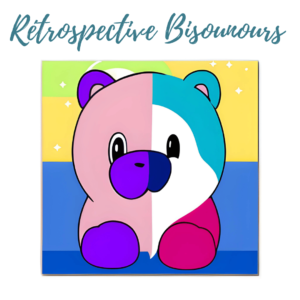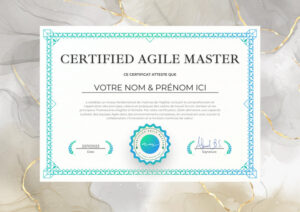I’m thrilled to introduce you to a Scrum retrospective approach that has consistently shown its value: the Care Bear Retrospective. This method is not just effective but transformative in fostering team spirit and nurturing an environment where constructive feedback thrives.
Managing Sprint retrospectives is pivotal in Agile projects, especially within Scrum frameworks. It’s a designated period for the team to address sensitive issues, potentially uncovering collective or individual areas for improvement. The Care Bear Retrospective distinguishes itself by emphasizing the positive aspects of a sprint and sidelining the habitual problems.

Index
Preparing for the Care Bears Retrospective
To embark on the Care Bears retrospective journey, ensure you’re equipped with:
- Sticky notes
- Pens
Allocating just 40 minutes to this retrospective can significantly enhance team dynamics. Currently, I’m on the lookout for an online tool that can replicate the vibrancy of this retrospective digitally. Until then, I recommend conducting this retrospective in person. If you know of any tools that could effectively animate this session online, please share them in the comments!
Conducting a Care Bear Retrospective
The Care Bear Retrospective is designed to enhance team spirit and encourage a positive approach to addressing challenges. Here’s how to facilitate this retrospective in a simple, tutorial-like manner.
Step 1: Identifying Challenges
- Objective: Each team member identifies a significant challenge they faced during the last sprint.
- Materials Needed: Square sticky notes and pens.
- Activity:
- Hand out one sticky note and a pen to each team member.
- Ask them to think about the biggest challenge they encountered in the last sprint.
- Have them write this challenge on their sticky note.
- Once everyone has written their challenge, instruct them to exchange their note with another team member.
- Duration: 5 minutes.
Step 2: Reframing Challenges Positively
- Objective: Shift the team’s perspective on challenges to focus on positive outcomes or learning experiences.
- Activity:
- Share Challenges: Team members take turns reading the challenge written on the sticky note they received.
- Find the Positive: For each challenge, the reader suggests a positive angle or a valuable lesson that could be derived from it. This could involve highlighting unexpected benefits, growth opportunities, resilience, or team collaboration that arose from addressing the challenge.
- Quick Discussion: Allow a moment for any immediate reactions or additional positive insights from the team. Keep this brief to maintain focus and momentum.
- Duration: 10 minutes.
Step 3: Brainstorming Solutions
- Objective: Collaboratively develop potential solutions or actions to address the discussed challenges.
- Activity:
- As a group, discuss possible solutions or improvements for each challenge presented.
- Encourage creative thinking and constructive feedback.
- Note down the proposed solutions next to each challenge.
- Duration: 10 minutes.
Step 4: Voting and Action Planning
- Objective: Prioritize challenges to address in the next sprint and assign action items.
- Activity:
- Review the list of challenges and associated solutions.
- Conduct a vote to identify the top three challenges the team wants to focus on for improvement.
- For each of the top challenges, assign a team member responsible for leading the improvement effort and set a deadline.
- Duration: 10 minutes.
Tips for Success
- Foster a Supportive Atmosphere: Encourage team members to approach this exercise with empathy and openness, ensuring a safe space for sharing and reframing challenges.
- Model Positivity: As the Scrum Master, lead by example. Demonstrate how to reframe challenges positively to inspire your team to adopt a similar mindset.
- Emphasize Growth: Reinforce the idea that every challenge is an opportunity for growth, learning, and improvement.
By guiding your team through this process of reframing challenges, you’ll help them develop a more resilient and positive outlook, turning potential obstacles into stepping stones for success.

In Conclusion
This retrospective format, emphasizing positivity and constructive action, is ideal for teams seeking to strengthen their bond and tackle issues collaboratively. It turns potential negatives into opportunities for growth, making it a valuable tool for any Scrum Master looking to foster a resilient and supportive team environment.
Give the Care Bear Retrospective a try in your next meeting and observe the difference it can make in team dynamics and morale
Sources and suggested reading
- This retrospective technique was inspired by Judicaël Paquet’s article on the MyAgilePartner blog.
- Interested in conducting an online retrospective for your remote team? Explore our comparative analysis of free online retrospective tools.







